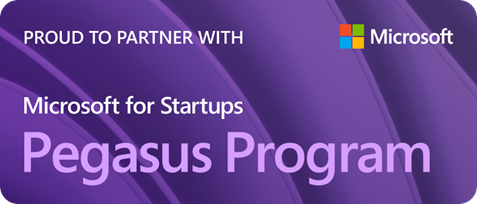Risk Centric Threat Modeling: Unlocking DevSecOps with PIRATE® ("Product Integrated Risk Analytics & Threat Evaluation")
Start Left®'s PIRATE® of the Software Supply Chain

In the evolving landscape of modern application security, Start Left® Security redefines how we think about securing products and empowering teams. Drawing inspiration from Gene Kim's The Phoenix Project, we recognize the need for high-performing DevOps teams that not only develop innovative software but integrate security into every stage of the product lifecycle. This requires a holistic approach, transcending traditional siloed methods and delivering solutions like our patented (11,288,167) PIRATE® model—"Product Integrated Risk Analytics & Threat Evaluation"—which provides a comprehensive framework for real-time threat evaluation, developer empowerment, and cultural transformation.
Traditional ASPM & CSPM: Where They Fall Short
The cybersecurity industry has historically applied traditional security approaches to modern application development. This results in vulnerability-centric platforms that don’t address the core challenges of product-focused DevOps. Application Security Posture Management (ASPM) and Cloud Security Posture Management (CSPM) tools are often limited to identifying vulnerabilities and reporting on them. While helpful, they don’t consider the entire product ecosystem or the cultural and organizational design shifts necessary to deliver secure software at scale.
Our PIRATE® Risk Model goes far beyond basic vulnerability management. It brings the key elements of DevSecOps, team empowerment, and cultural transformation together with technical excellence. This model delivers hyper-contextual threat detection by incorporating CI/CD pipeline behavioral analytics and big data to identify unknown risks across the entire application portfolio.
The Power of PIRATE®: Empowering Teams & Driving Secure Development
Why Traditional Threat Modeling Falls Short
In traditional security models, threat modeling is a manual, time-intensive exercise focused on identifying potential threats in a single product—often done in isolation. This approach has two significant shortcomings:
- It’s static: Traditional threat modeling is a one-time activity that doesn’t adapt to evolving risks.
- It’s disconnected: These models don’t tie security insights directly to business value or provide continuous monitoring.
PIRATE® Risk Modeling: A Continuous, Real-Time Approach
PIRATE® integrates security data into a continuous feedback loop, connecting historical and real-time security incidents across your entire CI/CD pipeline. By combining reverse engineering, APIs, and process data mining, PIRATE® provides a risk baseline that is continuously monitored and adapted, giving developers and security teams real-time insights into potential vulnerabilities.
This is the evolution of threat modeling—dynamic, product-focused, and context-aware.
Building the Cybersecurity Mesh with Start Left®: Empowering Teams at Every Level
In addition to threat evaluation, PIRATE® supports scalable, decentralized cybersecurity architectures like the Cybersecurity Mesh Architecture (CSMA). This ensures that every product team can actively monitor and secure their specific application environment while maintaining alignment with overarching security objectives.
By building this security architecture, Start Left® allows organizations to:
- Empower development teams with contextual data on threats that affect their specific applications.
- Equip leadership with a clear understanding of risk exposure and remediation effectiveness across all product lines.
- Facilitate collaboration between product, security, and operations teams, ensuring a unified focus on reducing risk.
Contextual, Continuous Threat Evaluation at Scale
In contrast to traditional threat models, PIRATE® continuously tracks application composition, provenance, and metadata integrity across an organization's entire product portfolio. By doing so, it enables teams to:
- Identify vulnerabilities in real-time, whether they stem from new threats or existing weaknesses.
- Mitigate threats early, providing risk-based insights that guide remediation efforts.
- Scale to meet the needs of global teams by decentralizing cybersecurity management.
Start Left® Security: Closing the DevOps-Security Gap
Start Left's PIRATE® model is all about aligning teams with the overarching goal of delivering secure, high-quality software at speed. Traditional ASPM and CSPM tools often fall short in this area because they don’t prioritize the human element or take a program-centric approach to security.
Where other platforms focus solely on detecting vulnerabilities, Start Left® Security integrates developer training, automated remediations, and gamified learning paths into the development process itself. This fosters a culture of continuous improvement and keeps developers engaged in maintaining security.
A Holistic Approach: Org Design, Culture Change, and People Empowerment
At its core, PIRATE® focuses on more than just technology—it's about fostering a security-first culture across your organization. By embedding security leadership in every product team, and providing tools like just-in-time training, real-time threat detection, and automated remediations, Start Left® empowers developers and security teams alike.
In Summary: PIRATE® is DevSecOps in Action
The PIRATE® model is the backbone of Start Left Security's comprehensive DevSecOps solution, transforming security from a fragmented, vulnerability-focused task to a fully integrated, program-centric approach. By combining threat modeling, real-time analytics, and continuous risk evaluation, PIRATE® ensures that security isn’t just bolted on at the end—it’s woven into the very fabric of product development.
Organizations that adopt Start Left® Security can expect not just to mitigate security threats but to fundamentally transform their development process, fostering collaboration, security, and speed in one unified approach. With PIRATE®, we help you turn DevSecOps into a sustainable cultural shift rather than just another tool in the pipeline.
Read More Content About the PIRATE® Model
- Didn’t Start Left? Here’s How We Can Still Save Your Bacon with Post-Incident Response
- How Start Left®'s PIRATE® Enhances Zero-Trust Architecture In Product Development Security
- Strengthening Role-Based Access Control (RBAC) & Enhancing Security Posture with Start Left® Security’s PIRATE® Model
- How Start Left® Reinforces Micro-Segmentation & Least Privilege Access for Achieving Zero-Trust in Product Security
- Fraud-Proof Your Software: How Start Left® Tackles Insider Threats and Vulnerabilities Before They Strike
SHARE!
More Resources















